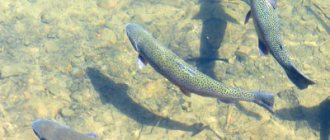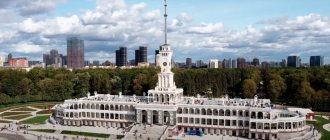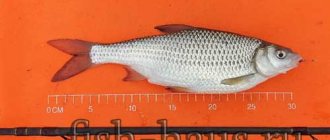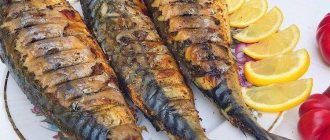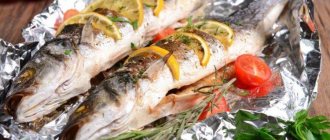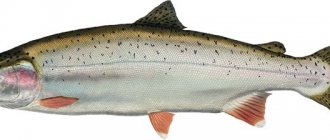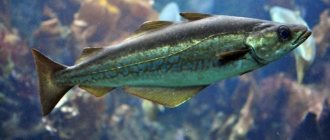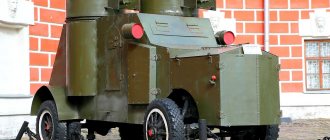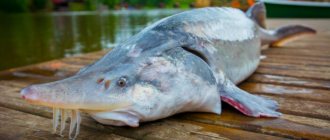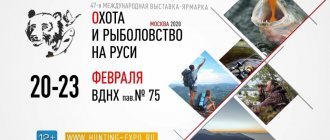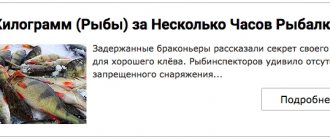Russia is an amazing country, it can combine the harsh Siberian beauty with eternal frosts, cold winds and the warm southern breeze of the Black Sea.
A true fisherman will find a place to his liking in the vastness of our vast homeland. There are places on the map of Russia rich in cedar forests, rivers, and lakes.
One of these places, bewitching with its clearest lakes, hilly ridges and deep rivers, is the Republic of Karelia, the pearl of northwestern Russia, a region with amazing nature, clean air, and rich culture. The Karelian region is ideal for recreation and fishing.
Read our article about Russian-made boats. We also recommend that you read the information on how to choose an inflatable chair for a PVC boat?
Karelia is a paradise for fishermen
On the territory of Karelia there are 27 thousand rivers that flow into the Baltic and White Seas.
These are Suna, Kovda, Chirka-Kem, Onda, Shuya and many others. The beds of large rivers form creeks and waterfalls, where grayling or trout are found in abundance. The Republic of Karelia has many swamps, marshy meadows, and lakes. The largest lakes are Lake Onega, Chudsko-Pskovskoye, Saimaa, Ilmen, and White Lake.
On the territory of the lakes you can not only relax, but also successfully go fishing. During the summer season (from approximately May to August-September) you can fish on the lakes using a float, spinning rod, fly rod or trolling. The fisherman's catch can be large perch, whitefish, burbot, and rare grayling.
Karelia is a northern region, and the water in the lakes practically does not bloom due to the cool temperature, which makes it possible to catch the largest specimens all season long.
Fishing in winter
Wildlife fishing in Karelia lasts several months, from December to the end of April. During deep frosts, fishing usually subsides, but when ice covers the pond and melts at the end of the season, it increases the likelihood of returning home with prey. What fish can you catch in Karelia in winter? Here is just a short list of representatives of the underwater world:
- Grayling, found in lakes, at a depth of up to 2 meters. You can catch fish using an ordinary winter fishing rod with a vertical spoon.
- Perch. Does not tolerate severe frosts, loves windless weather. The depth of its habitat is about 8-10 meters. For fishing, winter rods with the necessary supply of fishing line are used; it is recommended to use bloodworms or maggots for bait.
- Burbot. It begins to bite from mid-February at a depth of up to 15 meters, is not found near the shores of lakes, you should look for it in the most secluded areas of the reservoir. The fishing rod should not be too rigid, the diameter of the fishing line should be up to 0.25 mm, and the bait should be spinners.
- Whitefish. It begins to appear in March and April and is found both in lakes and rivers. The optimal solution for fishing is a spinner.
- Roach. It appears during the first thaw, is found in shallow water and bites very actively; it can be caught with jigs and maggots.
The best lake for fishing in the republic and how to get to the republic?
Are you already inspired by the Karelian region and want to enjoy fishing in the cleanest lakes of Karelia? Then you should choose the most suitable lake for fishing, where you should go first. These wild and at the same time stunningly beautiful places will give you not only mental relaxation, but also a rich catch. Traditionally, fishermen choose Lake Ladoga or White Lake.
In Lake Ladoga there are more than sixty species of commercial fish, in Lake White there are more than forty, most of the fish are red fish, salmon, trout, and whitefish.
There are also pike, burbot and bream. Lakes Chudskoe and Svetloe are rich in perch, roach, and pike. The Yukhta, Onda and Shuya rivers are also popular.
Should we be afraid of wild animals in Karelia?
There are not so many forest animals that pose a danger to humans in Karelia, and all of them do not wander into places where people often camp. Therefore, it is better not to go to the most remote and secluded places, otherwise you may still bump into someone.
A small danger comes from vipers. As a rule, they themselves try to get away from people, but sometimes they come across too calm individuals. The viper does not begin to attack first unless you step on it or are a couple of tens of centimeters away from it.
However, there is no need to worry about this: a wary viper begins to hiss as soon as a person approaches it within a few meters. Then you should carefully leave (do not run). The viper's venom is not fatal and does not cause any complications; poisoning from a bite can be cured in a couple of days.
The most important animal danger in Karelia is ticks. There are a huge number of them here and some transmit various diseases. Therefore, before going into the forest you need to get vaccinated. Most ticks occur in May, but there are plenty of them in summer too.
Train or car?
You can get to the republic by car or train. Fishing in Karelia as a savage is not a cheap pleasure, but avid fishermen recommend getting to the republic in an all-wheel drive vehicle with high suspension.
If you start your journey by car, you can get from the capital, central regions and south of the country along the M18 federal highway. Driving along this route you will see many unique places in the republic. For example, this route goes through ancient Ladoga, which has many ancient churches that everyone should visit.
The area outside the car window is very picturesque and the closer you are to Karelia, the more unusual places you will see. Many people go on vacation or fishing to Karelia by train or bus.
Departure is carried out from St. Petersburg or Moscow; travel time, depending on the type of transport, ranges from 10 to 19 hours.
Sights of Karelia on the map with a brief description.
When going camping, there is no need to sit exclusively in a tent camp. Karelia is rich in a variety of original attractions. At your service:
— Marcialnye Vody is a mud resort in the Kondopoga region. This resort was founded by Peter I in 171.
— Mount Sampo, which occupies a special place in Karelian-Finnish mythology. According to legends, it is a source of happiness, prosperity and abundance. In legends it is represented as a huge mill.
Author of the photo: https://ryjla.livejournal.com/
— Girvas volcano, located in the bed of the Sunna River. The Girvas hydroelectric power station was also built here.
— Kivach waterfall, located in the Kivach nature reserve . The reserve itself is distinctive in that all the main relief forms of Karelia are concentrated in a relatively small area. The waterfall is surrounded by many lakes of various shapes, which, in turn, are ideal for a “savage” vacation.
- Palyeozero. A cold body of water whose maximum depth reaches 74 meters.
— Lake Pisanets , located in the very center of the taiga forests of the Muezersky district. The nearest settlement to the lake is the village of Gumarino.
The lake is a deep fault, almost 7 kilometers long and 100-200 meters wide. The lake is surrounded by shores with steep slopes, the height of which can reach the same hundred meters. You can go down to the lake only with special equipment. Thus, this place has turned into a real paradise for rock climbers and lovers of extreme photography.
All these sights of Karelia are marked on the map:
Necessary gear for your trip?
If you go to the republic for wild recreation and fishing, you must understand that these are northern and harsh places, and in order for the bite on the Karelian lakes to be successful, you need to be thoroughly prepared.
You will need the following equipment and food:
- warm clothes and underwear;
- matches, candles or flint for making fire;
- fishing rods, spinning rods, fishing lines, hooks, spinners, lead sinkers;
- bait (bloodworms, larvae, cake, bread, crumb, semolina attachments and others);
- magnifying glass, working compass;
- modern GPRS navigator;
- first aid kit;
- fuel (spare gasoline if you are traveling to Karelia by car);
- pot and food (canned food, tea, cookies, cereals);
- good knife;
- anti-mosquito products;
- tent.
We recommend reading our new article on choosing a pump for your PVC inflatable boat.
A savage in Karelia
Over the past 3 years, I have already been to Karelia 5 times, each time a savage. The next trip took place in July 2015. In this story I will reflect the result of all the trips.
We were primarily interested in the nature of this region, although we were not going to give up visiting museums.
What can you see in Karelia? Among the historical monuments, these are primarily Valaam and Kizhi. Alas, we never visited either there or there. The main reason is the unfriendliness of the services for visiting these places. At least in our opinion. The view is not of pilgrims, but of tourist photographers who are not ready to shell out huge amounts of money for organizing individual tours.
Also, although legally this is not Karelia, it is logistically more convenient to get from here to Solovki. Here we were, although we were very unlucky with the weather. As I understand it, you just need to live there for at least a week, this is the only way to get good conditions for shooting.
Conventionally, Karelian can be divided into 4 natural zones:
1 Sortavala
2 Petrozavodsk
3 South
4 North
The southern part is most familiar with forests and plains.
We didn’t really get into the northern part, but this is the most mysterious and fabulous part, but the format of our trips has not yet included going deeper into these zones, and after all, this is a border zone. There are some nuances. The Paanajärvi National Park is located there.
Sortavala - rocks, quarries, lakes
Petrozavodsk plains, taiga, lakes, many lakes.
Roads
Two, of course, good roads are the M18 Kola highway, to Murmansk. I A 121 Yarn Sortavala. The rest of the roads do not shine with quality. Just like throughout Russia actually. And if you go deeper into the wilds of Suoyarvi, it’s just a dirt road, and broken. And there’s no need to go deeper, just get away from the main local destinations.
If you travel from Moscow, you can get to Sortavala in different ways:
1 through St. Petersburg, skirting Lake Ladoga from the west (the first time the navigator tried to guide me this way)
2 turn off the Kola highway to Olonets and further along the eastern coast of the same lake, to the A 121 highway
3 turn off the Kola highway onto highway A 121, in the Pryazha area.
The last option is the best and most convenient, both in terms of road quality and speed limits (there are no permanent settlements on the highway). The second option is more picturesque.
If the weather is good and there is time, then you can go according to the second option. There was nothing creepy there; I didn’t see any traffic cops either.
Speaking of traffic cops... They don't take bribes. True, I didn’t come across them. But such is their fame. From the rules of their work, two things are very annoying: love for restrictions of 40 km in almost any locality, incl. on federal highways, but at the same time they allow overtaking both on turns and on climbs, when the oncoming traffic is not really visible. This approach surprises me.
Sortavala.
Actually, the city itself did not represent anything very interesting for us, we were just passing through it. An ordinary provincial, small town. Quiet calm. From Sortavala you can get to Valaam. In 2013 it cost 1,500 rubles per person one way. We were with dogs at the time, so our way there was blocked. They don't like dogs there. Yes, we ourselves were not eager. I am calm about religion, but from a historical point of view, there is little left of the original buildings there.
Ruskeala
Marble quarry located near Sortovala. We've been there several times. Changes for the better are visible, although there is still a lot of work to do, especially with night lighting, which now (2014) causes nothing but tears.
First of all, because only a small area of the quarry is illuminated.
In this quarry, marble was extracted for construction, incl. and St. Petersburg. According to one version, the retreating Finns flooded this quarry. After the war they tried to exploit it further, but due to the fact that the fight against water was losing, it was abandoned. Since 2002 it has been functioning as a mountain park.
There are a lot of photographs. The quarry is beautiful. A must visit.
There are guest houses near the Quarry. We stayed on the lake shore in tents, so I can’t say anything about the level of service in them. What’s upsetting is that there is a walking path around the quarry; it would seem, especially in winter, that it would be logical to put a “tea house” on the path of the walking route... but no. Alas. While the administration has no time. I hope they will understand that they need to not only exploit existing resources, but also somehow add their own work. There is generally a problem with food there. The existing cafe looks like it comes from the USSR, only it has a microwave. It's cold there in winter, because... This is not a fundamental structure, but a plastic tent. The menu is poor. It would seem that coming from St. Petersburg/Petrozavodsk/Moscow... a person would want to go to the toilet first. Toilets, too, come from the USSR. There is nowhere to wash your hands. These are the disadvantages.
There are many beautiful places around Ruskeala.
White Bridges Waterfall (Yukankoski)
There was once a bridge there, but now almost nothing remains of it, but there is a waterfall. It is possible to get to it, but it is difficult. It’s better to drive there at least in a crossover. Otherwise you will have to walk. The road goes up and is full of large stones.
If you have the opportunity, try to stop by. Located on the way back from Sortavala to Pryazha.
Vottvaara
This is my love! The place is unique and very beautiful, a little creepy. The highest point of Karelia
Has the fame of a shaman. Sometimes this mountain is also called Witch Mountain, Death Mountain. The latter name owes its origin to the Great Patriotic War. About a hundred partisans died here in 1942 during the battle. Although in fact, Death Mountain is one of the neighboring hills, and not the heroine of this article. But because For a long time, the remains of partisans were found in the mountain area, hence the name. I don’t think it’s worth explaining the appearance of the name – Witch Mountain. The meaning of the name Vottvaara, I can only guess. Having scoured the Internet, the anticipation is overwhelming. We have been to the mountain twice. The first time we were very unlucky with the weather, but the second time it was much better. The mountain itself is a kind of ridge, up to 7 km long, therefore, for a better inspection, it is best to devote a week to this mountain, ideally pitching a tent at the top. But we were not ready for this yet.
The mountain is famous for its Seids - a large stone standing on small ones.
There are many people who, trying to be considered sober, try to convince themselves and others that all this is of exclusively natural origin, but judge for yourself. Even more laughter is caused by these same “sober-minded” people who reject the second component of the mountain, and more often than not simply ignore it, pretending that it does not exist. The second side of the issue is not cult, but technological. Namely, clear signs of rock development. Observing these phenomena, you ask yourself the question: who, when and HOW, did this? This largely intersects with the ideas of Andrei Sklyarov. Notice the smooth edges of the stones. Unconvincing? And so? Still don't believe me? Well then, we are coming to you... Pay attention to two mutually perpendicular lines - cuts, or rather cuts of stones! There is a large stone at the top, about 4 meters in height (along the right edge).
Who like. And I don’t believe in the natural origin of this.
And there are many such traces there.
For skeptics, see the photo below. Everything is written on it. Notice how primitively the stone is processed.
And one last thing. This is an overview photo. In my opinion, this landscape very accurately resembles mountain quarries.
If you have the opportunity, be sure to visit this place yourself. And use the help of a guide. It’s even better if you go in his car, it’s more expensive, one and a half thousand (2015), but you’ll have peace of mind for your car. From the village of Gimoly, to the mountain, the road is very bad, and even with deep puddles.
Lakes
There are many lakes, the names are different and sometimes very tricky. I didn't even try to remember them
I only remember Syamozero. “The Dawns Here Are Quiet” and “Cold Summer of ’53” were filmed on the shores of this lake.
Take a closer look at the photographs and stills from the film (And the dawns here are quiet)
There are many beautiful places and lakes. You may not believe me in most of the photos from Syamozero, but there is minimal post-processing in these photos. On the banks of Syamozero there is the Three Bears zoo complex. On its territory you can spend the night, both in tents and in cottages (2013). We even managed to take part in washing the badgers that were rolling around in the mud while walking. Three photographers and not a single photograph of this.
Kivach
The third largest flat waterfall in Europe.
Previously, it was single-threshold, but... The USSR tried to arrange logging and rafting everywhere, then such a waterfall broke the rafted logs, after blasting, it became three-threshold.
Price
If you are driving a car for a wild holiday to Karelia, your main expenses are gasoline and food. The cost depends on the size of your engine and the route you plan to take from home to the republic.
Hotels in Petrozavodsk cost from 700 to 2500 thousand rubles per day, train ticket. If you are not planning a trip by car, then a train ticket will cost you 2 thousand 800 rubles, a bus ticket is a little cheaper - 1700. The ticket amount is also affected by the point of departure, St. Petersburg or Moscow.
Consider unexpected expenses and daily meals. On average, vacation and fishing in Karelia will cost 7-15 thousand for a couple of days.
But these numbers directly depend on where you are going on vacation, whether you will spend the night in a hotel or a tent, where you are going for fishing (a remote area of the republic or the traditional Lake Ladoga).
What to take with you to a distant land?
For any trip (for fishing too) you need good equipment, which depends on the places where you are going. You shouldn’t buy the necessary things on the spot, because they are sold there at high prices in order to get more from unlucky tourists.
- Transport. A personal car, capable of making its way along not very good roads, is quite suitable as transport. A boat (rubber or metal) will also come in handy, if, of course, you are going to engage in water tourism.
- Bait. The most common and effective type of bait is the common earthworm, although maggots or moths will also work. Some “old school” fishermen prefer to dig up the bait themselves, but you can simply buy it at the store.
Tackle. All an ordinary fisherman needs is a fishing rod and a spinning rod. You should take care of spare parts for your gear, because anything can happen and then you will have to disrupt your rest and go to the nearest fishing store.- Tent. Can be purchased at a tourist store. You should only take it if you are going to stay overnight in nature. If you are not afraid of insects, you can simply spend the night near a burning fire in sleeping bags.
- Warm clothes. Nights in Karelia have always been cold, so it’s worth taking care of your clothes. The optimal set is a pair of sweaters, a jacket, boots and a hat. You can also take a warm blanket just in case.
- Food for the fisherman. Here everyone takes what he wants. And if you are not sure that you can eat everything quickly, then it is better not to take any perishable foods.
- Dishes. Everything is easy here - a bowl, a couple of cutlery, a mug and a small pot to cook your own food.
- Necessary equipment. This is a knife, eggplants for collecting water, a pair of strong ropes, matches and a sharp ax for chopping wood. When lighting a fire, you should always be careful and monitor the flame, otherwise you could start a forest fire.
- Insect repellent . Again, everyone prefers something different. When purchasing products that you have not used before, you just need to check whether you or your companions have allergies.
- First aid kit. In addition to the standard kit (bandages, iodine, etc.), you also need to take care of the possibility of insect or snake bites. And don’t neglect it, if you go fishing alone and get a wasp sting on your neck, then there will be plenty of problems.
- Local map. You can buy it in a special store. Of course, you can always rely on your own or someone else’s memory (if you’re not here for the first time), but it’s still worth taking precautions, especially when fishing in hard-to-reach lakes.
- Life jackets. Such vests are needed not only for those who cannot swim. In autumn, the water in rivers and reservoirs can be very cold and can easily trigger cramps, so before swimming it is important to accurately determine the water temperature and sensibly assess your swimmer abilities.
Advantages and disadvantages
Recreation and fishing in the Karelian Republic is an opportunity to enjoy the beautiful northern nature, catch a successful catch in the form of valuable varieties of species, enjoy all the delights of a wild holiday or visit numerous bases and campsites.
Karelia is considered one of the best places for fishing. Many fishermen come to the republic during the summer and winter seasons. When naming the disadvantages of the trip, it is worth saying that it is a little expensive for the pocket of the average Russian.
You may be interested in material about the features of glue for a rubber boat. Read about independent tuning of inflatable PVC boats here.
Camping in the center and north of Karelia
The central Medvezhyegorsky, Suoyarvsky, Segezhsky districts attract tourists with many rivers and lakes. The more popular campsites in Karelia with tents, as well as recreation centers, are concentrated in coastal areas.
For those who prefer a “wild holiday,” camping in Karelia with tents on Lake Vodlozero is suitable. There are many parking lots along the tourist routes in the Vodlozersky National Park. By agreement with the administration, tents can be placed there. Each resting place has a fire pit and a table.
In northern Karelia, equipped tent camps and parking lots for motorists are found near Kostomuksha, Loukha, Belomorsk, Kemi, and Kalevala. One of them is the “Vygostrov” camping site near Belomorsk. It is located near the White Sea Canal on the cape of the Vyg River.
Paanajärvi National Park offers guests several parking areas. But since the territory is a specially protected natural area, there are restrictions on it, which you should check with the park administration about.
